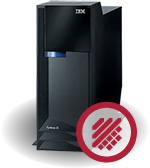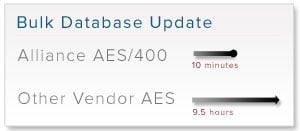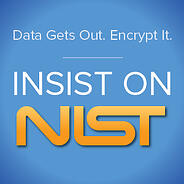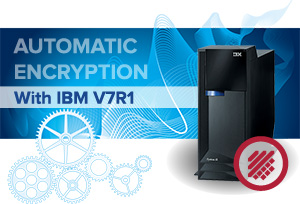Last week we posted part one of our two-part series covering XML & Web Services. This second half covers how organizations are currently using web services, how the technology can increase revenue, and how the technology can reduce costs. For even more information, we have made a recorded webinar available titled "XML & Web Services - How to Win More Business."
How are organizations currently using web services?
There are lots of ways web services are being used to help companies do business and make business work well. Definitely in back-office processing, we see orders being placed via web services -- shipment requests, notification of order status, all types of business transactions that you can imagine are quite easily implemented as a web service. So, sort of that fundamental day-to-day operational side of web services are there. And then you see some really creative kind of things. You see things like Microsoft SharePoint which provides a web service based collaboration tool that helps people share information and collaborate on documents. These are powerful technologies that can really be used in a number of different ways. So, really, almost any interaction that you have that involves information is quite susceptible to being engineered through web services.
How can the technology increase revenue?
Well, think of new business. Sometimes, when you want to bring onboard a new customer there is going to be some data interchange that you have to do with that customer. Web services can make that really easy and fast to do. Web services can really be an enabling technology to on-board entirely new sets of customers – perhaps in lateral opportunities. In terms of increasing revenue, that is probably the main way we see XML and web services being deployed.
You mentioned that this technology can also reduce costs. Can you explain?
In today’s world there can still be a lot of manual work as we move data through our various applications. Web services can automate that. We can gain efficiency within our own organizations by automating a lot of these processes. So, again, XML and web services can be the transport mechanism or the enabling technology for these processes to happen automatically. We push out inefficiencies, we automate processes, we make data flow faster, which then can improve customer service. So XML and web services can be an important efficiency tool within an organization as well.
Are there any specific cost savings for our listeners who implement a SharePoint server?
A SharePoint server is a Microsoft server based product that is a collaboration tool and it really lets people in geographically different locations share information in real-time. So you can push a document up to a SharePoint server, someone else can get notified that the document is available, and then immediately take a look and work on it. This is all done with a web services type of implementation. Or imagine you are on an IBM Mainframe where you are running back-office applications. What if your daily reports could automatically be published to a SharePoint server and made immediately available to the people who need them? You can now reduce printing costs, time for the information delivery, and you make that information much easier to share. So this technology is really helpful for pushing cost out of an organization.
Are there any companies we might recognize using your XML?
Sure! PotteryBarn is using the RightNow CRM and they needed a way to do bulk data transfers to a SharePoint server hosted by RightNow. Our Alliance XML/400 was able to do that. In this case, the payload was an Excel CSV file that had to be shared between PotteryBarn and RightNow. Our technology made this sharing take place.
How complex is the implementation of XML and web services technology?
That’s a good question. Let me take that in two parts. XML and web services technologies have a fair amount of complexity in them. You have issues of security with HTTP/HTTPS implementations and you have the complexities of dealing with XML payloads - they have to be parsed properly to extract data and make it useable.
Encryption and encoding becomes an integral part of this technology, so there are a fair amount of really complex technologies integrated into a web services solution. However, the actual solutions that get deployed don’t have to be complex.
For example, in Alliance XML/400 we make the implementation of the client and server applications very simple. They are natural native interfaces on the IBM i that any developer can use if they wish. So in our solution we tried to hide the complexities of all these technologies in the solution itself, so that our customers don’t have to deal with that. I think that deploying XML and web services with our product is a very straightforward and easy thing to do.
We have had people in a very short period of time get up and running with integration with their customers – in as little as a couple of days. This is something that can be deployed quickly. Good solutions hide those complexities so that people can get on with doing business and not spend their time fussing around with the technology itself.
This has been some great information. Is there anything else you would like to say before we are done?
XML and web services are really enabling tools. We are living today in a difficult economic time and yet the most successful companies are moving forward. They are working to engage new opportunities, to reduce cost out of their organizations, and XML and web services technologies can help with this process. So, being positive and looking for opportunities and being sure to look at the payback for web services as part of the whole picture is really important.
For more information on XML & Web Services, view our webinar titled "XML & Web Services - How to Win More Business."

 Everyone in the IBM i (AS/400, iSeries) world with responsibility for these large servers knows that IBM will soon announce the next release of the IBM i operating system, and that version V5R4 will go off of support a short time after that. While the date of the next release and the sunset date for V5R4 have not been announced, IBM has a fairly predictable pattern of new OS releases and support schedule. You can read Timothy Pickett Morgan’s thoughts in an article he wrote titled "The Carrot: i5/OS V5R4 Gets Execution Stay Until May."
Everyone in the IBM i (AS/400, iSeries) world with responsibility for these large servers knows that IBM will soon announce the next release of the IBM i operating system, and that version V5R4 will go off of support a short time after that. While the date of the next release and the sunset date for V5R4 have not been announced, IBM has a fairly predictable pattern of new OS releases and support schedule. You can read Timothy Pickett Morgan’s thoughts in an article he wrote titled "The Carrot: i5/OS V5R4 Gets Execution Stay Until May."

 As a company that works hard to protect your data, we get a lot of questions – from people wanting to know the ins and outs of our products to IT professionals who are new to the world of meeting compliance regulations. Luckily, our company has several experts to answer these questions. One topic that we often get questions regarding is system logging on the IBM i (AS/400). Logging on the IBM i is different than logging on other platforms. I recently sat down with Patrick Townsend, Founder & CEO, to pick his brain on what system logging is, and why it is so unique on the IBM i.
As a company that works hard to protect your data, we get a lot of questions – from people wanting to know the ins and outs of our products to IT professionals who are new to the world of meeting compliance regulations. Luckily, our company has several experts to answer these questions. One topic that we often get questions regarding is system logging on the IBM i (AS/400). Logging on the IBM i is different than logging on other platforms. I recently sat down with Patrick Townsend, Founder & CEO, to pick his brain on what system logging is, and why it is so unique on the IBM i.
 Meeting compliance regulations on your IBM i for securing data in motion doesn’t need to be difficult. They all have the same overlying theme – encryption. PCI DSS requires encryption when transferring files over the internet and WiFi networks. HIPAA/HITECH says that encryption is the only Safe Harbor from a data breach. While failing to comply with these regulations can financially impact your organization, the good news is that with just a few core encryption components, you can easily satisfy these requirements.
Meeting compliance regulations on your IBM i for securing data in motion doesn’t need to be difficult. They all have the same overlying theme – encryption. PCI DSS requires encryption when transferring files over the internet and WiFi networks. HIPAA/HITECH says that encryption is the only Safe Harbor from a data breach. While failing to comply with these regulations can financially impact your organization, the good news is that with just a few core encryption components, you can easily satisfy these requirements.
 I’ve been writing about encryption performance lately because our customers and potential customers have been asking about the impact of encryption on the overall performance on their systems. It’s good that they are asking these questions as a poorly performing encryption library can have severe impact on your application environment. This is especially true on an IBM Enterprise platform like the IBM i (formerly known as AS/400 and iSeries) where customers often run multiple applications.
I’ve been writing about encryption performance lately because our customers and potential customers have been asking about the impact of encryption on the overall performance on their systems. It’s good that they are asking these questions as a poorly performing encryption library can have severe impact on your application environment. This is especially true on an IBM Enterprise platform like the IBM i (formerly known as AS/400 and iSeries) where customers often run multiple applications. We did a simple little comparison test of encrypting 1 million credit card numbers on an entry level IBM i model 515 server with a single processor. We compared the native IBM AES library with our own AES encryption library which is NIST certified and optimized for encryption. The difference is very large. Our IBM i encryption library clocked in at 116 times faster than the native IBM i library. Note that this is an informal test and not independently verified, but practical experience by our customers is very similar.
We did a simple little comparison test of encrypting 1 million credit card numbers on an entry level IBM i model 515 server with a single processor. We compared the native IBM AES library with our own AES encryption library which is NIST certified and optimized for encryption. The difference is very large. Our IBM i encryption library clocked in at 116 times faster than the native IBM i library. Note that this is an informal test and not independently verified, but practical experience by our customers is very similar.
 While FIELDPROC was introduced nearly two years ago with IBM i V7R1, it is becoming new to administrators who are finally upgrading to the latest IBM i OS. Lucky for you newbies, we have plenty of experience with this release and can share a wealth of knowledge for your encryption project. FIELDPROC allows us to bring you automatic encryption – encryption with no application changes! We recently hosted a webinar titled “
While FIELDPROC was introduced nearly two years ago with IBM i V7R1, it is becoming new to administrators who are finally upgrading to the latest IBM i OS. Lucky for you newbies, we have plenty of experience with this release and can share a wealth of knowledge for your encryption project. FIELDPROC allows us to bring you automatic encryption – encryption with no application changes! We recently hosted a webinar titled “





 We're just recently back from the COMMON 2011 conference in Minneapolis. What a great experience for Townsend Security and our IBM i customers. The encryption and key management sessions that Patrick and I presented were well received and well attended. Many of the attendees were interested in the mechanics of encryption, and many of those were pleasantly surprised to learn that there is now a way to encrypt database fields without doing massive application program changes.
We're just recently back from the COMMON 2011 conference in Minneapolis. What a great experience for Townsend Security and our IBM i customers. The encryption and key management sessions that Patrick and I presented were well received and well attended. Many of the attendees were interested in the mechanics of encryption, and many of those were pleasantly surprised to learn that there is now a way to encrypt database fields without doing massive application program changes.